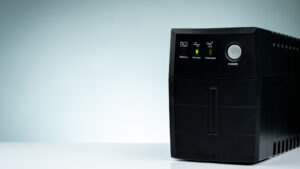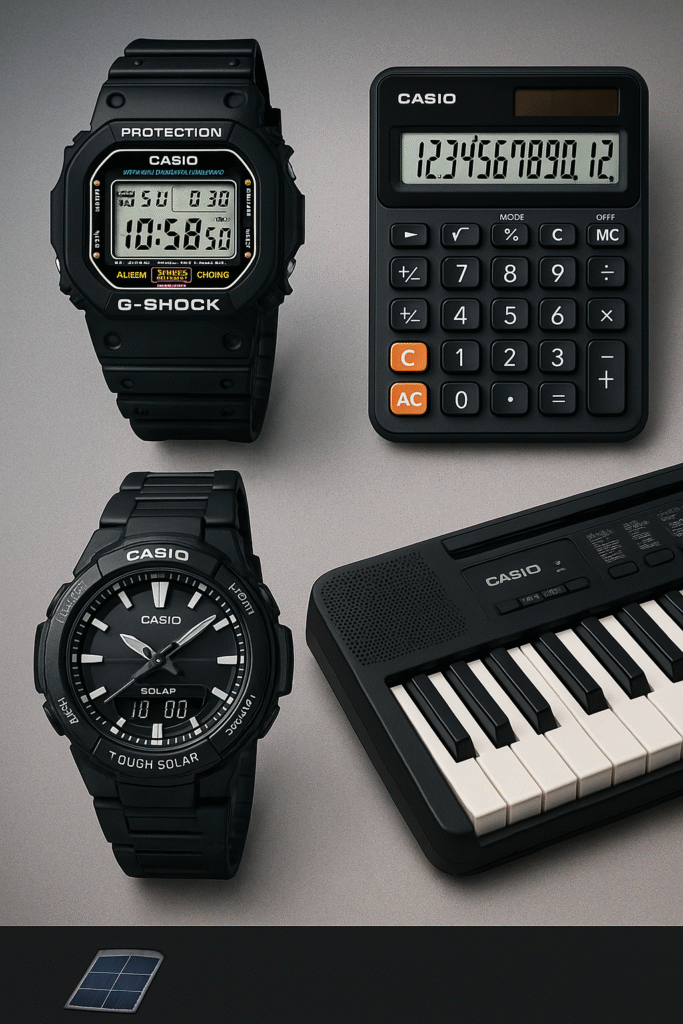Introduction to Uninterruptible Power Supplies (UPS)
Have you ever been in the middle of an important project or binge‑watching your favorite series when – bam – the power goes out? That sudden blackout can be more than just an inconvenience; it can lead to data loss, hardware damage, and a whole lot of frustration. That’s where an Uninterruptible Power Supply (UPS) steps in as your digital superhero, swooping in to save the day by providing continuous, clean power.
Why UPS Matters in Today’s World
In our hyper‑connected age, life comes to a screeching halt without reliable electricity. From medical equipment to broadband routers, everything relies on steady power to function. A UPS not only gives you a safety net during outages but also filters out spikes and surges that can fry your gadgets. Think of it as a shock absorber for your electronics!
The Role of Snowbreak in Power Protection
Snowbreak, a trusted name in power management, has been designing UPS solutions that blend advanced technology with user‑friendly features. Their Locate series is tailored for a range of applications, ensuring that homes, offices, and data centers stay up and running through voltage fluctuations and blackouts.
Understanding Snowbreak Locate UPS
Company Background and Reputation
Snowbreak has been in the power protection game for over a decade, earning praise for reliability and innovation. They’ve carved out a niche by focusing on compact designs, intuitive interfaces, and robust safety features. When you choose Snowbreak, you’re not just buying hardware; you’re investing in a legacy of quality engineering.
Core Features of the Locate Series
- Automatic Voltage Regulation (AVR): Smooths out brownouts and overvoltages without draining the battery.
- Pure Sine Wave Output: Ensures compatibility with sensitive electronics like servers and medical devices.
- Hot-Swappable Batteries: Replace batteries without shutting down your UPS or connected gear.
- LCD Status Display: Real-time feedback on load levels, battery health, and input/output voltages.
- USB & Network Connectivity: Integrate with management software for remote monitoring and graceful shutdowns.
Key Benefits of Snowbreak Locate UPS
Continuous Power During Outages
Imagine your work doesn’t skip a beat just because the grid did. With a Snowbreak Locate UPS, you get precious minutes – or even hours – of backup power to save files, safely shut down systems, or keep critical tasks live.
Protection Against Surges and Spikes
Lightning strikes, utility grid switching, or industrial machinery can all send voltage spikes through your wiring. These sudden jolts can damage sensitive components. The Locate’s surge suppression keeps your electronics safe and sound.
Improved Equipment Longevity
By delivering clean, consistent power and buffering against harmful fluctuations, a UPS reduces wear and tear on your devices. It’s like giving your gear a daily spa treatment – they’ll thank you with extra years on the clock.
Snowbreak Locate Models Explained
Snowbreak’s Locate lineup caters to various needs, from home offices to small data centers. Let’s zoom in on each model:
Locate 500VA – Entry-Level Protection
Specifications
- Output Power: 300W (500VA)
- Battery Runtime (50% Load): ~5 minutes
- Dimensions: 9 x 3 x 5 inches
- Weight: 7 lbs
Ideal Use Cases
- Home routers and modems
- Desktop PCs and monitors
- Small NAS backups
Locate 1000VA – Mid-Range Reliability
Specifications
- Output Power: 600W (1000VA)
- Battery Runtime (50% Load): ~10 minutes
- Dimensions: 11 x 4 x 6 inches
- Weight: 12 lbs
Ideal Use Cases
- Workstation PCs
- Point-of-Sale (POS) systems
- Small network switches
Locate 2000VA – High-Capacity Performance
Specifications
- Output Power: 1200W (2000VA)
- Battery Runtime (50% Load): ~15 minutes
- Dimensions: 14 x 5 x 8 inches
- Weight: 20 lbs
Ideal Use Cases
- Small server racks
- Mid-level data closets
- Critical medical equipment
How to Choose the Right Snowbreak Locate UPS
Calculating Your Power Requirements
First things first: tally up the wattage of all your devices. Don’t forget peripherals like external drives or network switches. A simple spreadsheet works wonders here: list each device, its wattage, then sum up. Aim for a UPS rated at least 20% above your total to avoid overloading.
Battery Runtime and Load Considerations
How much runtime do you need? If you just want enough time to save work and shutdown, 5–10 minutes may suffice. For extended bridging, look at bigger models or additional battery packs. Remember, runtime decreases as load increases.
Physical Size and Installation Constraints
Check where your UPS will live. A compact 500VA might tuck neatly under your desk, whereas a 2000VA could need a dedicated shelf or rack. Ensure there’s ventilation space and easy access for cable management.
Installation and Setup Guide
Unboxing and Inspecting Your UPS
- Inspect for Damage: Look for dents or leaks in the packaging and battery compartments.
- Verify Accessories: Ensure you’ve got power cords, USB cables, and the user manual.
Connecting to Your Devices
- Power Off Equipment: Shutdown everything before wiring.
- Plug into Battery-Backed Outlets: Only connect mission-critical devices to the battery-backed ports.
- Surge-Only Outlets: Use these for non-critical gear that still needs surge protection.
Initial Configuration and Testing
- Power On UPS: Wait for the self-test to complete; the LCD should report normal status.
- Connect USB/Network: Install any monitoring software per instructions.
- Simulate an Outage: Unplug mains power and ensure the UPS throws over to battery without hiccups.
Maintenance Tips for Longevity
Regular Battery Health Checks
Batteries degrade over time. Aim for quarterly checks via the LCD or management software. Most units alert you when replacement is due.
Firmware Updates and Diagnostics
Snowbreak periodically releases firmware to improve performance. Schedule a check every 6 months to stay up-to-date.
Cleaning and Environmental Best Practices
Keep the area dust-free and maintain ambient temperatures between 20–25°C (68–77°F). Excess heat shortens battery life.
Troubleshooting Common Issues
Frequent Alarms and What They Mean
- Beep Every 5 Seconds: Likely running on battery—check mains power.
- Continuous Beep: Overload condition; reduce connected load immediately.
Overload and Shutdown Scenarios
If you exceed the UPS’s VA rating, it will shut down to protect itself. Simply unplug non-essential devices and restart.
Battery Replacement Procedures
- Disconnect from Mains and Load
- Remove Battery Cover
- Unplug Old Battery
- Install New Battery (Match Polarity)
- Reassemble and Test
Comparing Snowbreak Locate UPS to Competitors
Feature-by-Feature Comparison
| Feature | Snowbreak Locate | Competitor A | Competitor B |
|---|---|---|---|
| Pure Sine Wave Output | ✔ | ✔ | ✖ |
| Hot-Swappable Batteries | ✔ | ✖ | ✔ |
| Network Card Support | Optional | Optional | Built-In |
| LCD Status Display | ✔ | ✔ | ✔ |
Price and Value Analysis
While Snowbreak Locate sits mid‑market, its blend of features, warranty, and reliable customer support often yields a lower total cost of ownership compared to budget brands.
Customer Support and Warranty
Snowbreak offers a 3‑year warranty with optional extensions and 24/7 tech support, which beats many rivals’ standard 1‑year policies.
Use Cases and Applications
Home Office Protection
From Zoom calls to unsaved documents, a Locate UPS keeps your home setup humming through brief outages.
Small Business and Retail
POS systems, credit card terminals, and security cameras—no risk of transaction failures or blind spots on your CCTV.
Data Centers and IT Closets
Parallel configurations allow multiple Locate units to scale up protection for server racks and network hardware.
Advanced Features and Integrations
Network Management Cards
Monitor and manage your UPS fleet remotely, receive email alerts, and automate graceful shutdowns.
Software Monitoring Solutions
Snowbreak’s proprietary software provides real‑time dashboards, usage logs, and predictive maintenance alerts.
Scalability with Additional Battery Packs
When you need more runtime, simply snap on extra battery modules without replacing the entire unit.
Environmental and Safety Considerations
Disposal and Recycling of Old Batteries
Lead‑acid batteries must be recycled properly. Many retailers accept old units for safe disposal.
Safe Placement and Ventilation
Avoid enclosed cabinets and keep the UPS at least 10 cm from walls to allow heat dissipation.
Conclusion
Investing in a Snowbreak Locate Uninterruptible Power Supply is like giving your electronics an insurance policy against the unpredictability of power. Whether you’re safeguarding a home office or a small data center, the Locate series offers scalable, reliable protection that ensures uptime and peace of mind. With user‑friendly installation, advanced monitoring options, and strong support, Snowbreak has crafted a UPS lineup that checks all the boxes for modern power management.
FAQs
1. What’s the difference between a pure sine wave UPS and a simulated sine wave UPS?
A pure sine wave UPS delivers power that closely matches grid electricity, ensuring compatibility with sensitive devices. Simulated sine waves can cause issues with certain electronics, such as high‑end servers or medical equipment.
2. How often should I replace the batteries in my Snowbreak Locate UPS?
Typically, batteries should be replaced every 3–5 years, depending on usage and environmental conditions. Regular health checks via the LCD or software will alert you when it’s time.
3. Can I connect a printer or other non‑critical devices to my UPS?
Yes, but it’s best practice to use the surge‑only outlets for non‑critical gear to maximize battery capacity for essential equipment.
4. Is it possible to expand the runtime of my UPS?
Absolutely. Snowbreak offers optional external battery packs that can be daisy‑chained to your Locate unit for extended backup periods.
5. How do I know if my UPS is overloaded?
The Locate’s LCD will display an overload warning, and you’ll hear a continuous beep. Simply unplug non‑essential devices to bring the load back within limits.


